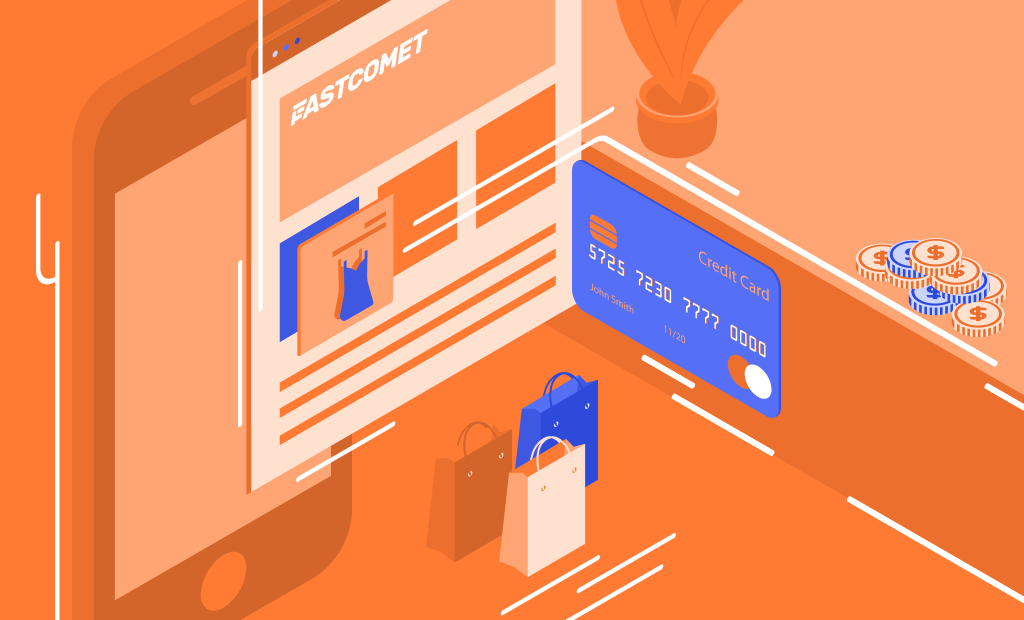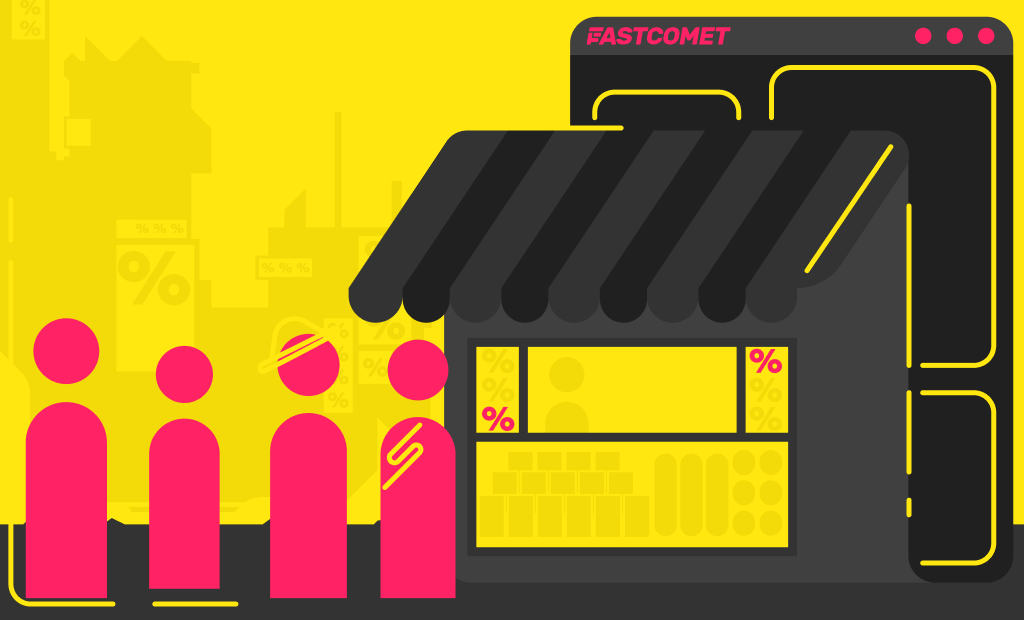
Make the Right Choice when Selecting Payment Gateways for Your Online Business
Whether you’re just starting your online shop or you’re already running a small eCommerce business, the right choice of a payment gateway is essential for getting paid quickly, securely, and at the best cost. With the exponential growth of online transactions, the role of the payment gateway in the payment processing system has risen in importance in the last few years.
The eCommerce payment gateway serves as a transaction middleman between your business and your clients. On the one hand, it ensures a high level of data security for your clients. On the other hand, the gateway provides your eCommerce company with quick payment delivery and a number of useful functionalities.
So what exactly is a payment gateway, and how does it work? Find out below and check out our list of the top five things to consider when choosing one for your eCommerce website.
Table of Contents:
What is a Payment Gateway?
A payment gateway is a software that facilitates the process of a customer making secure online payments to a merchant. It is a virtual terminal equivalent to the point-of-sale (POS) physical terminal in brick and mortar stores. Depending on the provider, the online payment gateway offers diverse payment options such as credit and debit card payments, direct payments, and other alternative payment methods.
The different participants in the payment processing chain are:
- The Customer – the person who wants to make a purchase on your store.
- The Merchant (your business) that wants to accept payment from the Customer for a purchase through your eCommerce website.
- The Payment Gateway is the portal through which the Customer’s transaction information is transferred securely from the shopping cart on your website to the Payment Processor. Among other things, the Payment Gateway provides a secure connection between the Customer and the website in order for the transaction to be processed.
- The Payment Processor authenticates the payment with the customer’s Issuing Bank to ensure there are enough funds in the account and then confirms or rejects the transaction.
- The Issuing Bank is the customer’s bank, from which the funds needed for the purchase will be obtained.
- The Acquiring Bank is your bank, which provides you with an account where you receive the money from the purchases.
How the Payment Gateway Works
The payment gateway serves as a secure payment connection between your eCommerce website and your customer’s browser. Let’s say you are running an online shop that sells electronics. Here’s how a purchase would go through your payment gateway:
- A customer – Jane – has chosen a tablet for their kid and is about to order it. She clicks on the buying button for the product and proceeds to Checkout.
- She is directed to the Checkout page, where she needs to choose a payment method. Jane prefers to pay with her credit card and enters her details.
- Your store’s payment gateway safely obtains the payment details from her issuing bank and encrypts them. Then, it forwards the transaction information to the payment processor.
- The payment processor requests verification from the issuing bank that there are enough available funds. If there are, the payment is confirmed.
- The issuing bank sends the necessary funds, and the payment gateway forwards them to your merchant’s bank account.
- In the end, the customer receives a message for the successful purchase in the payment gateway interface.
- After the completion, Jane is redirected back to your online store.
How to Choose a Payment Gateway for Your Business
Choosing the right online payment gateway for your eCommerce website depends on several factors specific to the needs of your business. However, there is a list of common indicators that you should consider when reviewing payment platforms. Here are the most important ones.
Consider Crucial Factors
Some of the most critical factors to guide your payment gateway platform choice are the type of payments, currencies, and shopping cart platform integrations that it supports.
Payment methods
The type of payments should typically include the most common debit and credit cards, such as Visa and MasterCard. It’s best to ensure you can also offer local payment methods and the option to pay with a digital wallet. With Skrill, for example, you get all of these through the Quick Checkout solution and shopping cart integration.
Currencies
Consumers typically prefer to pay in their local currency. That is why the more currencies your payment gateway supports, the better. This will allow you to conduct cross-border eCommerce transactions without worrying about the currency and exchange rates.
Integration Options
Last but not least, your payment platform should easily integrate with the eCommerce platform where you’re hosting your online shop or with your custom-made one. For example, here, you can check some of the shopping cart integrations provided by Skrill.
Check the Security and Compliance Standards
Safety and compliance should be on your mind when reviewing payment gateway options. It’s your responsibility as a merchant to provide a high level of security to your customers, as well as to your own business. Thus, you have to make sure your payment platform ensures that.
The essential compliance requirement that you should look for is the PCI DSS(Payment Card Industry Data Security Standard). This is a security standard for businesses that work with customers’ credit card data, and it’s paramount for recurring payments enablement. The other important security indicator that you should aim for is that the payment gateway boasts solid encryption and fraud screening protection.
Get to Know the Costs
The price tag of the payment gateway matters, especially for a startup or a small eCommerce business.
You should explore and compare the fees that different platforms offer. The most common ones you should look for include setup fees, subscription fees per month, and transaction fees. Many providers offer transaction fees between 2.5% and 4%, plus a fixed fee per transaction. With Skrill, you get special reduced fees as low as 0.9% for credit or debit card payments and 0.5% on bank transfers with Rapid Transfer.
Make Sure UX and Mobile Support are Solid
The usability and mobile support of the payment gateway are other central factors that you should consider when choosing a provider.
The user experience (UX) is essential for how your customers will interact with your online shop as a whole. It should be user-friendly and seamless, as not to hamper their purchase.
As much as 50% of people today browse from their mobile devices. This means that your payment gateway should be fully functional on mobile. It should be optimized so that customers can easily enter their payment details and complete the buying process as seamlessly as possible.
Choose a Platform with Great Customer Support
As you’ll rely heavily on the payment gateway for all your online payments, you have to be able to count on their customer support. That’s why choosing a payment gateway with solid customer support that speaks your language is essential.
This is important in order to ensure a great experience for your customers. Any technical issues with the gateway should be resolved quickly so that you can avoid any potential downtime of your online store.
If you have an eCommerce website, selecting your payment process is one of the most critical decisions you’ll make for your business. Allowing your customer the option to pay by credit or debit card requires that you have a payment processor. A payment processor is a company that acts as a mediator, moving money from your customer’s bank account or credit card to your bank account.
Ecommerce is enjoying a high that is expected to outlast the pandemic. With brick-and-mortar stores closing down due to the lockdown, people are even doing their groceries online.
Best Payment Gateways of 2021
The best payment gateways make it simple and easy to take and process payments online.
Some payment gateways are simply a way to charge cards, with fees being charged to the merchant ordinarily at anywhere between 1.4%-3.5%, with no monthly fees. However, if you have a merchant account, processing fees are reduced to around interchange fees, typically around 0.10%-20% per transaction, and come with monthly fees.
For low-volume sales, a simple payment gateway will be the most effective option in the short term, as the monthly fees can eat into income more than processing fees. However, once sales volume reaches a critical threshold, it becomes cheaper to pay a monthly fee for merchant processing with interchange fees.
You’ll find that a number of the best payment gateways offer both options or some other advantage above the field. This could be anything from reduced processing fees for specific cards to direct integration into accounting software.
1. PayPal

Reasons to Use
- Easy to set up and use
- Many buyers have PayPal accounts
- Customization options
Boasting more than 220 million active accounts worldwide, PayPal is the most widely used payments platform. Founded in 1998 as Cofinity, it lets you make and receive payments all over the world.
PayPal provides payment processing services for eCommerce vendors, auction sites, and other commercial entities globally and allows you to accept credit cards, including Amex and Visa. It also offers easy cart integration, plentiful customization options, online invoicing, and facilitates credit card payments over the phone.
PayPal is normally associated with the online marketplace eBay. Still, it’s worth noting that since 2020, it ceased to be eBay’s main payment option (as the company switched to Adyen – although PayPal is still offered as an optional payment service). In a statement made last year, eBay said it made the move to provide customers with more competitive prices.
Pricing is competitive, with card processing charged at 2.9% per transaction, with no monthly fees, making it ideal for new and small businesses.
2. Stripe

Reasons to Use
- Built-in APIs and developer tools
- Mobile payments
Reasons to Avoid
- Tech understanding needed
Stripe is yet another powerful payment platform designed for internet businesses, with the company claiming to handle billions of dollars worth of transactions annually. The main difference between this service and many others is that it isn’t an out-of-the-box solution. Instead, you’re provided with a range of flexible tools to customize your payment processes.
Designed for larger firms, it offers a plethora of APIs that allow you to create your subscription services, on-demand marketplaces, or crowdfunding platforms. It supports a range of development languages, including Ruby, Python, PHP, and Java.
Furthermore, Stripe supports more than a hundred currencies and offers features such as mobile payments, subscription billing, and one-click checkout. Users also get access to a dashboard where they can visualize transactions. Then, this is a feature-rich payment gateway, although Stripe does demand a lot more technological knowledge from the user than most providers.
Stripe offers a particular advantage to merchants based in Europe, as card processing fees for European cards are 1.4% + a small fee per transaction. For non-European cards, processing fees are a more standard 2.9%, plus a small charge per transaction. Additionally, for larger volume needs, it has a customized plan with volume discounts.
3. Payline

Reasons to Use
- Built-in security and fraud protection
- Mobile app integration
- Lower monthly fee
Reasons to Avoid
- Transaction costs are not fully transparent
Payline is a Pineapple Payments company headquartered in Chicago, Illinois. It provides solutions to businesses ranging from startups to Fortune 500 companies, focusing on the payment experience.
Payline offers gateway payment processing, and its web solutions are designed to integrate with over 175 online shopping carts. The company also offers mobile solutions designed to accept payments via mobile apps. The Payline payment processing gateway also integrates with QuickBooks for ease of payroll management and business financials in general.
Pricing for bricks and mortar stores includes a monthly fee, plus a small percentage fee per transaction. For online stores, the monthly and transaction fees are a little higher.
4. Adyen

Adyen is used by companies such as Uber, Spotify, Microsoft, and eBay to handle business and customer transactions. The software lets you accept every payment made to your company from a single platform and gives you tools to manage risk and track results.
Not only does Adyen accept more than 250 payment methods and 150 global currencies, but it also lets you analyze transaction data to benefit from “data-rich insights to learn customer behavior.”
For example, you’re able to identify buyer behavior and patterns, allowing you to tweak products and services appropriately. There’s also a built-in risk management tool that sifts through data to identify and fight cases of fraud.
Processing fees vary by payment method, but the firm uses Interchange pricing with an additional transaction fee. However, you will need a merchant bank account to take advantage of interchange pricing.
Reasons to Use
- Works from one platform
- Used by major firms
- Integrated data insights
Reasons TO Avoid
- Complex pricing structure
5. Authorize.net

- Merchant account provider
- Support for credit cards and digital providers
- A wide range of currencies supported
- Designed for any business
The main aim of these solutions is to streamline the payments process, and Authorize.net (from Visa) does precisely that. Developed with firms of all sizes in mind and offering a choice of plans, the platform gives you the tools to sell items and take payments online or in person at a store.
With the solution, you can accept payments from websites and transfer funds into a merchant bank account quickly. It supports all major credit cards, including Visa, MasterCard, American Express, Discover, Diner’s Club, and JCB. As well as this, the platform is compatible with digital payment services such as Apple Pay, PayPal, and Visa Checkout.
Although the software can accept transactions made by customers worldwide, your business must be registered in the US, UK, Canada, Europe, or Australia if you’d like to use this service.
Other Payment Gateways to Consider
While we’ve mentioned some of the best merchant gateways, there are a number of others worth considering. This is especially as many are available to integrate with existing eCommerce platforms using nothing more than an easy-to-install plugin. Here, therefore, we’ll list some additional merchant gateways that are well worth considering, according to the differing needs of online businesses.
2Checkout is another payment provider that online merchants commonly use, not least because, as well as one-off purchases, it’s easy to set up subscriptions.

This makes it especially useful for online businesses selling digital services such as web hosting or web design companies. It’s also commonly available as a plugin for significant eCommerce platforms and can process a wide range of global currencies.
Opayo offers a merchant gateway and the ability to directly record all sales and transactions directly into your Sage accounting software.

This makes it especially invaluable for efficiency purposes, not least because it means you can see your costs and income in real-time. However, while there are different plans available for Opayo, it’s best to have a merchant account to get the most out of the software, not least for reducing transaction fees in the first place.
FIS Global (previously Worldpay) is another popular payment gateway, with a number of integrations available for popular eCommerce platforms.

You can set it up as a paid-monthly service or else use a merchant account to take advantage of interchange fees on all transactions. However, Worldpay has undergone significant changes over the past few years, after being owned by at least two different companies, so it’s worth inquiring as to what services are currently available and at what price.
Conclusion
On your journey through the world of eCommerce, one of the first milestones will be deciding on a payment gateway provider. Be sure to do your research into each one before making a quick choice. While they may seem quite similar initially, it’s worth taking a closer look to see which of them gives you the features best suited for your online business.
Use the info and tips in this blog post to help navigate you toward making the right decision for your eCommerce store. Feel free to use the comment section and input any questions you have regarding this article’s content.

The latest tips and news from the industry straight to your inbox!
Join 30,000+ subscribers for exclusive access to our monthly newsletter with insider cloud, hosting and WordPress tips!




No Comments